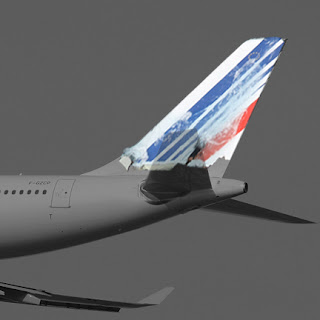





PARIS (Reuters) – Airbus has faced problems with the speed sensorson its A330 aircraft dating back to at least 2001, forcing changes in equipment as well as the pilot's flight manual, according to regulatory documents.
An automated error message from the flightdeck pointing to discrepancies in airspeed data is among a handful of clues available so far to experts investigating last week's crash of an Air France A330 in an Atlantic storm that killed 228 people.
France's chief crash investigator said on Saturday airspeed problems had arisen on the same type of plane before but stressed it was too soon to say if these were to blame for the crash and added the plane was still safe to fly.
Airbus confirmed on Saturday it had recommended before the crash that airlines change speed sensors called pitot probes. But it said it was an optional move based only on performance rather than concerns about safety, which would be mandatory.
Operators have however been warned in the past of unsafe conditions resulting from potential ice damage to the sensitive probes fixed to the fuselage, according to online filings.
In 2001, France reported several cases of sudden fluctuation of A330 or A340 airspeed data during severeicing conditions, according to the U.S. Federal Aviation Administration.
"Lost or erroneous airspeed indications could result in lack of sufficient information for the flight crew to safely operate the airplane, and consequent inadvertent excursions outside the normal flight envelope," the FAAwrote in a 2001 summary.
Airbus was ordered as a result to update the cockpit manual. On Thursday, following the crash, Airbus issued a reminder to pilots on procedures in the event of speed discrepancies.
The plane which crashed was an A330-200, the newer of two variants of the A330 wide-body twinjet. It was built in 2005.
In 2002, operators of the A330-300 sister model had been ordered to upgrade speed sensors, again because of problems in extreme weather, according to a directive issued in Australia.
The pitot probes, angular tubes sticking out from the side of the aircraft, measure speed based on pressure but their measurements can be halted or skewed if they become blocked.
Two companies manufacture sensors suitable for the A330, France's Thales and U.S.-based Goodrich.
A spokeswoman for Thales, which supplied the sensors on the crashed aircraft, said on Friday it was premature to speculation whether they were linked to the crash pending the investigation.
France's weather office said on Saturday the equatorial storm in the plane's path was severe but "not exceptional."
(Reporting by Tim Hepher; Editing by Matthew Jones)
French and Brazilian officials have described a "burst" of messages from Flight 447 just before it disappeared.
A more complete chronology was published Wednesday by Brazil's O Estado de S. Paulo newspaper, citing an unidentified Air France source, and confirmed to The Associated Press by an aviation industry source with knowledge of the investigation:
• 11 p.m. local time — The pilot sends a manual signal saying the jet was flying through CBs — towering cumulo-nimulus thunderheads.
• 11:10 p.m. — A cascade of automatic messages indicate trouble: The autopilot had disengaged, stabilizing controls were damaged, flight systems deteriorated.
• 11:13 p.m. — Messages report more problems: The system that monitors speed, altitude and direction failed. The main flight computer and wing spoilers failed.
• 11:14 p.m. — The final message indicates a loss of cabin pressure and complete system failure — catastrophic events in a plane that was likely already plunging toward the ocean.

